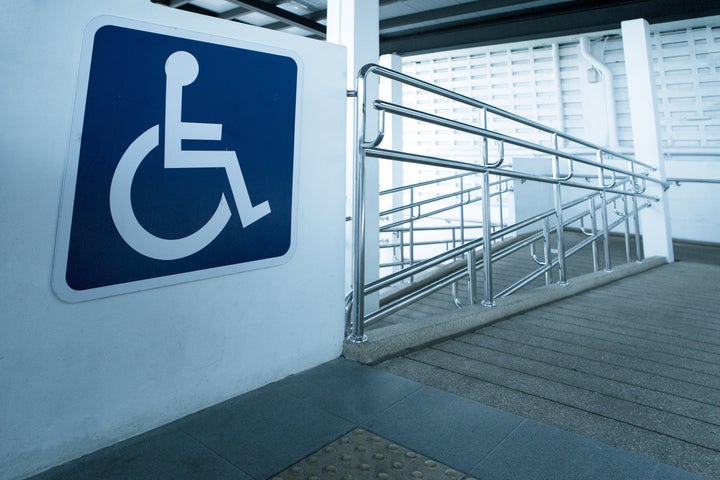
Providing increased access for disabled people does not inherently provide access for all. Equitable use of the built environment is only truly possible by changing social attitudes, as well as physical structures.
The purpose of disability access, such as disabled toilets, disabled parking, and low counters is to provide better equality for disabled people. Disabled people fought for this access, but the fight to access them is still ongoing. True access is only possible if all disabled people who require the use of these facilities are given the right to without confrontation.
However, this is not the case. According to a survey conducted by Crohn’s and Colitis UK, 93% of people think that by challenging a “healthy-looking person” for using the toilet, they are “standing up for the rights of disabled people”. However, I interpret this as 93% of people whose knowledge of disability is constructed by misleading stereotypes that add to an even more exclusionary society for the vast majority of disabled people.
I don’t mean those who just have an invisible disability, but also those whose disabilities are visible but do not match the stereotype that society has become accustomed to. I have dwarfism and I have often been confronted for using the disabled toilet or even a lower counter, just because I am not a wheelchair user. In fact less than 10% of disabled people use a wheelchair, but people seem to think that the vast majority of disabled people are wheelchair users. This is because it is what is constantly conveyed to them through a myriad of information, including disability imagery, such as the International Symbol of Access. The International Symbol of Access is the well-known symbol for disability. It is a stick figure of a wheelchair user in side profile. It was probably created with good intention in order to denote access for all who needed it, but somehow society has taken the symbol all too literally.
But this is not the only problematic image. A quick search on Google, using the phase ‘disability access’, results in hundreds of pictures that are dominated by wheelchairs or wheelchair users. However my disability is more likely to come up if you google ‘circus’ or ‘freak show’. This creates an incongruous encounter when someone like me tries to access a space that provides better access.
People often tell me that I am not disabled, because somehow a person with dwarfism is ‘just short’. As a person with dwarfism I have to navigate and interact with a built environment that is created for the average sized person, and this is no easy task. To be able to use some of the disabled facilities that have been lowered, including counters and disabled toilets, gives me a glimpse into how the average-sized person gets too easily interact with their surroundings. However, I don’t truly know what it is like, as the average-sized person never gets told off for using something at their height and made to feel guilty for not using a counter that comes up to their forehead.
The average stature of a person with dwarfism is 4ft (121cm), whilst the average stature of a wheelchair user is 4ft 6” (137cm). This makes them taller than people with dwarfism, yet somehow people think I am taking advantage of when using a lower counter or accessible toilet, which has a lower sink and hand dryer. Lower counters are a required access need for wheelchair users because sitting in a wheelchair makes them shorter. I am also short, but unless I struggle to use the high counter I am a fraud who must be confronted or least made to know that I am in the wrong. Sometimes it is the shake of the head or the muttering under the breath that lets me know that I am in the wrong. Other times it is direct confrontation, which can be quite intimidating when the person is towering over you. I will defend my access needs, but sometimes wish I could go about my daily routine without confrontation.
When someone confronts a disabled person for trying to access a disabled space or facility they are hindering, not helping the drive for disability equality. I would like to be able to get out of my car without encountering the unwanted comments from people who seem to think that because I can walk I am not disabled. Each time I try and access a disabled space or facility I am aware that I am being judged and made to feel like a fraud because I don’t match their expectations, which are constructed by media images of disability.
It is about time that disability imagery became more inclusive. There are already signs on toilet doors in the UK that state under the International Symbol for Access that state “not every disability is visible”, but this is still not enough. We need to start including various disabled bodies in disability imagery, not just the ones that are easily identifiable for the audience. I’d like to see an image of a person with dwarfism accessing a low counter or just someone with a completely invisible disability stepping out of a disabled toilet being used for a company’s access guide.
Erin Pritchard is a lecturer in disability and education at Liverpool Hope University